Currently, photovoltaic systems are far from being able to meet the entirety of electricity demands. The utilization of the installed capacity of a PV plant is only around 12%, equivalent to about 1000 hours per year out of a total of 8760. This shortfall is exacerbated by the fact that most of the electricity is produced in the summer months when there is plenty of sunshine. Conversely, electricity production from PV systems drops to around 15% during the winter months compared to the summer months. This uneven electricity production is a major problem in our climate, as the need for electricity in winter is much higher than in summer. This is mainly due to the increased need for heating in homes, offices, and public buildings. Graph 1 illustrates the distribution of electricity consumption by month.
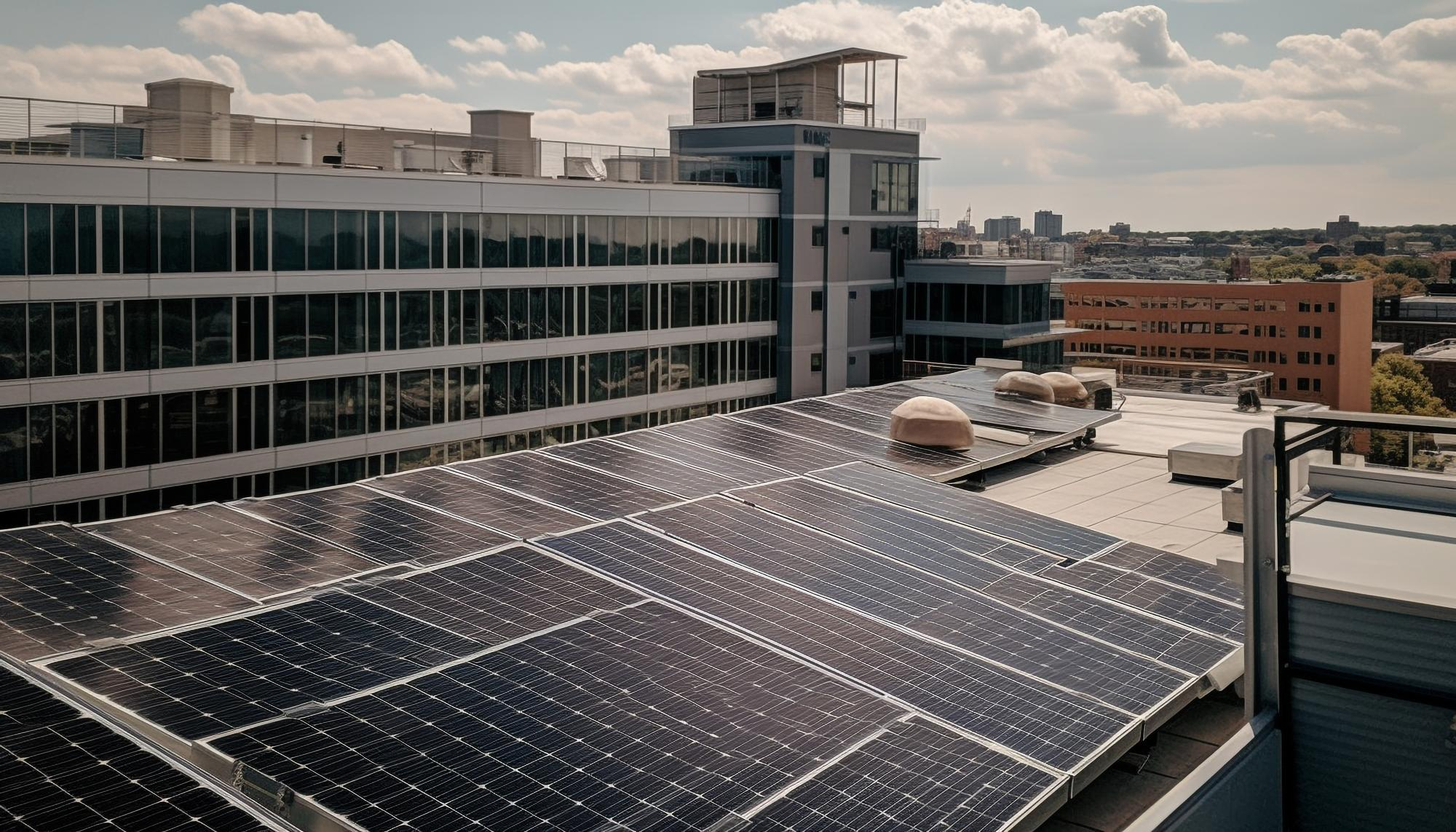
How the Combination of Cogeneration and Photovoltaics Increases Energy Independence and Reduces Emissions in Energy Production
With the increasing adoption of renewable energy sources, the European Union expects to derive 40% of its energy from renewable sources by 2030. Within this framework, it is projected that around 60% will be generated through photovoltaic systems. This impending shift signifies a significant transformation in our electricity generation landscape, as it will heavily depend on resources that are only intermittently available. This presents potential challenges to the stability of the energy system and the reliability of energy supply. Therefore, it is crucial to develop the complete mix of energy sources, ensuring they complement each other and guarantee stable operation.
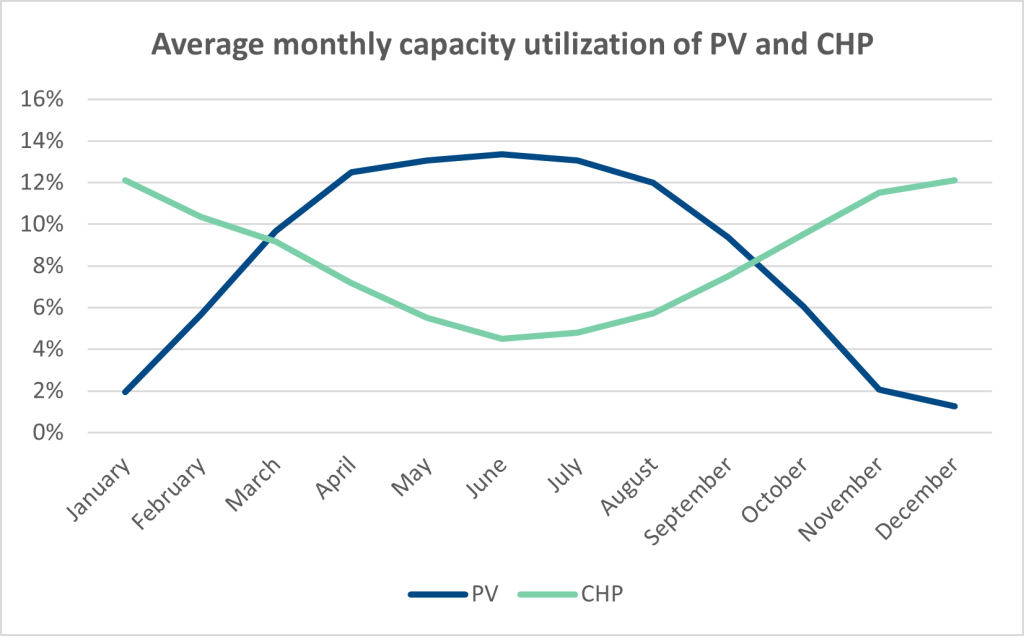
Graph 1 – Monthly electricity consumption in the Czech Republic
Accumulation of Energy for Stable Use of Renewable Sources
Solar power plants operate at maximum capacity on sunny days, generating ample and economical electricity. However, a challenge arises: this energy must either be consumed immediately or stored for later use. Fluctuating energy production is characteristic of renewable sources, leading to instances of surplus green energy that cannot be immediately utilized. Given the rapid advancement of these sources, it is imperative to identify effective methods for efficiently storing this excess energy and preserving it for future needs.
Batteries stand as the most widely employed and advanced technology for short-term energy storage. With a longstanding history of use, batteries remain the optimal choice for specific scenarios, effectively evening out electricity production over several days.
A promising avenue for long-term energy storage revolves around hydrogen production. This form of storage permits the preservation of energy generated in summer for utilization in winter. In the context of photovoltaic systems, surplus energy generated during periods of abundant sunlight can be harnessed to electrolyze water using an electrolyser. This process disintegrates water into hydrogen and oxygen. The resultant hydrogen can be stored for later use, subsequently being employed for electricity generation, heating, or even as transportation fuel.
With technological progress, hydrogen production is anticipated to become progressively more efficient and cost-effective. Nonetheless, the electrolysis technology employed for hydrogen production remains relatively uncommon and is still undergoing development, including the requisite infrastructure and technical standards.
For the time being, seasonal energy storage for photovoltaic power plants is virtually non-existent. Until sufficient energy storage is achieved, Combined Heat and Power (CHP) units can serve to fulfil energy demands during the winter months. These units facilitate the simultaneous production of electricity and heat from a single energy source. In this scenario, the cogeneration unit functions as an auxiliary electricity source for the photovoltaic system, enabling the system owner to meet their entire electricity consumption. The unit works by burning fuel to power an electrical generator while using the waste heat from this process for heating or industrial purposes. Although CHP units have traditionally been powered by fossil fuels, modern technology now allows them to run using green alternatives such as hydrogen or biogas. This promotes sustainability and reduces greenhouse gas emissions.
The Synergy between CHP Units and Photovoltaic Power Plants
CHP units are well complemented by PV plants due to their different seasonal characteristics, as depicted in Graph 2. PV plants are most efficient in the summer months when the sun’s radiation is strongest. In contrast, CHP units find their prime utility during the colder winter months, coinciding with heightened heat requirements.
CHP units are completely independent of weather and other external influences, allowing them to flexibly produce energy according to current demand. Even though these units are often disconnected in the summer, they serve as effective compensators in situations of PV plant outages, proficiently bridging the electricity deficit. Thanks to their swift activation and ability to generate electricity and heat instantly, they can compensate for insufficient electricity production nearly immediately.
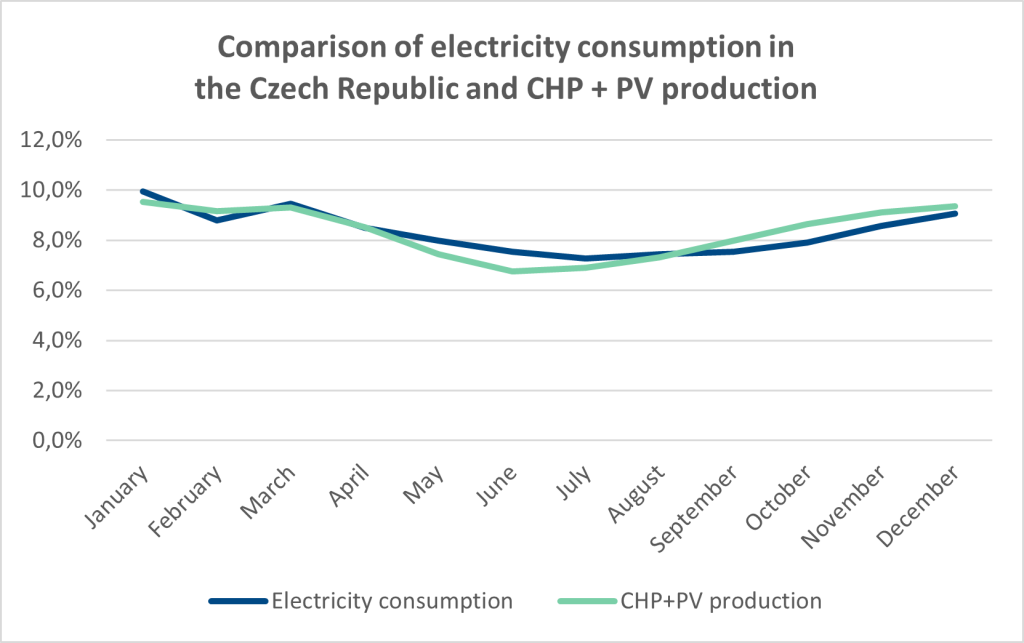
Graf 2 – Průměrné využití výkonu FVE a KJ během celého roku v procentech.
The data in the graph suggests that these forms of energy generation are highly complementary.
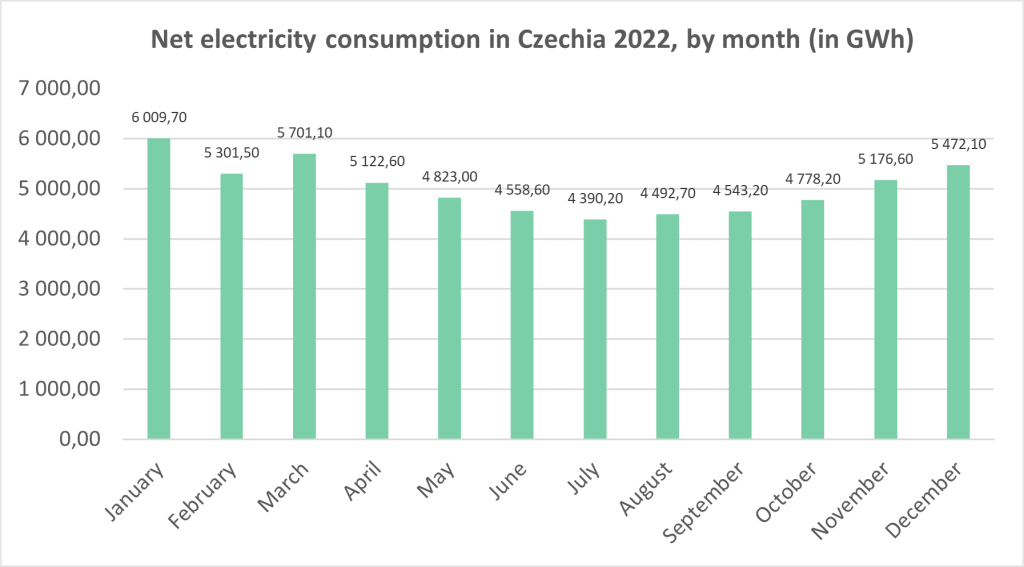
Graph 3 – Comparison of electricity consumption in the Czech Republic and KJ + PV production
Graph 3 shows that the combination of a photovoltaic plant and a cogeneration unit corresponds exactly to the electricity consumption in the Czech Republic. A comparable pattern would emerge for other countries too. This means that the average consumer would be able to completely cover their electricity consumption with a suitably designed capacity of this combination. This interconnection would thus virtually eliminate dependence on the external grid and external electricity suppliers. The only remaining need in this case would be the provision of fuel for the operation of the CHP unit.
Economic Challenges Arising from an Imbalanced Energy Mix
If most investors decide to rely on the same source of electricity, i.e. PV panels, and they all generate electricity at the same times during sunny days, a serious problem will arise. During periods when demand for electricity is low but production from these panels is high – for example, on sunny weekends – electricity prices can fall below zero. This would leave solar operators in a situation where they would have to pay for the electricity they have produced. In the past, these situations were rare and short-lived exceptions, but with the rapid increase in the number of PV systems, these scenarios are becoming more and more common.
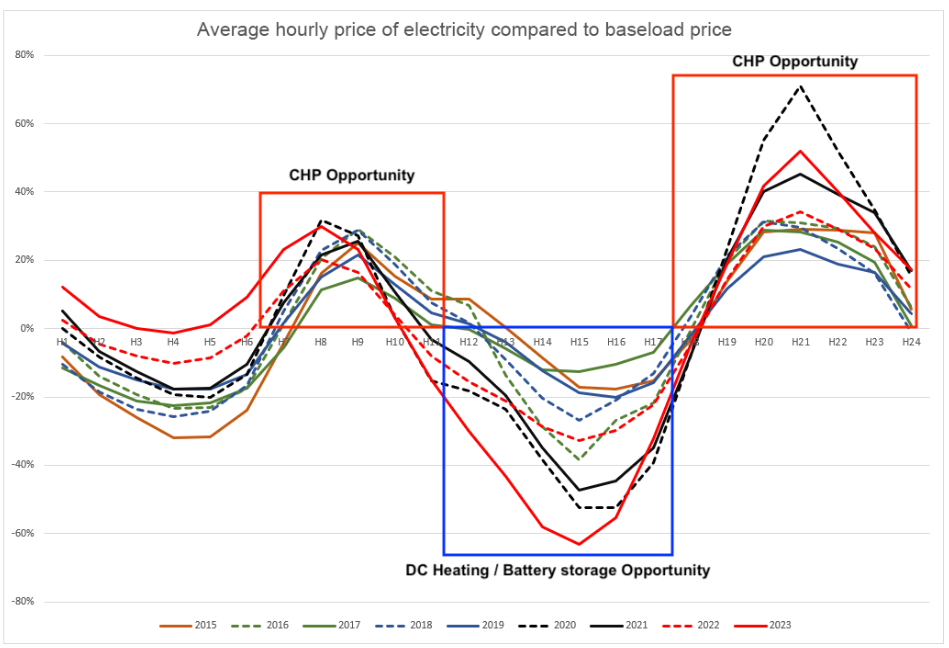
Graph 4 – Average hourly price of electricity compared to baseload price
Graph 4 with average electricity prices shows the optimal opportunities for running CHP units during the day. The morning and evening peak periods are optimal for CHP. In winter, when PV plants hardly produce electricity, CHP units operate for 16 hours a day to provide the required amount of energy. In summer, on the other hand, CHP units only produce electricity during a short peak period of 2 hours in the morning and 2 hours in the evening.
Until seasonal energy storage is sufficiently developed, it is important to avoid over-reliance on solar PV systems and to create a harmonious mix of different energy sources. By linking PV and CHP, a synergistic effect is created between the two systems, providing a stable supply of energy, while at the same time reducing dependence on non-renewable sources and reducing emissions compared to fossil fuel-only power generation. The use of natural gas to manage instability in energy supply can be instrumental to a successful full transition to renewable energy in the future.




